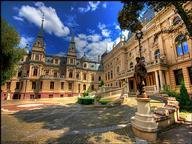Quiz Answer Key and Fun Facts
1. The first documented settlement in what is now Warsaw, Poland dates back to the 9th century. It was a small village called Brodno. What happened to Brodno?
2. When Warsaw became the capital of Masovia in 1413, the city began to grow considerably. In its early capital days, Warsaw was divided along what line?
3. Which of the following was not an advantage Warsaw had that allowed it to be selected capital of the Kingdom of Poland in 1596?
4. The 1656 Battle of Warsaw is widely regarded as the start of which region's military dynasty?
5. In the early 18th century, Warsaw was constantly invaded and occupied by various forces during which conflict?
6. The 1794 Warsaw Uprising was led by Jan Kalinski and which other person?
7. The November Uprising that began in 1830 was started when young soldiers attacked which Warsaw Building?
8. Warsaw became the capital of the independent Poland after which event?
9. At the dawn of World War II, Warsaw was easily captured by the invading Nazi forces for what reason?
10. The Round Table Agreements, which were signed in 1989 in Warsaw, most notably legalized what?
Source: Author
Joepetz
This quiz was reviewed by FunTrivia editor
gtho4 before going online.
Any errors found in FunTrivia content are routinely corrected through our feedback system.
